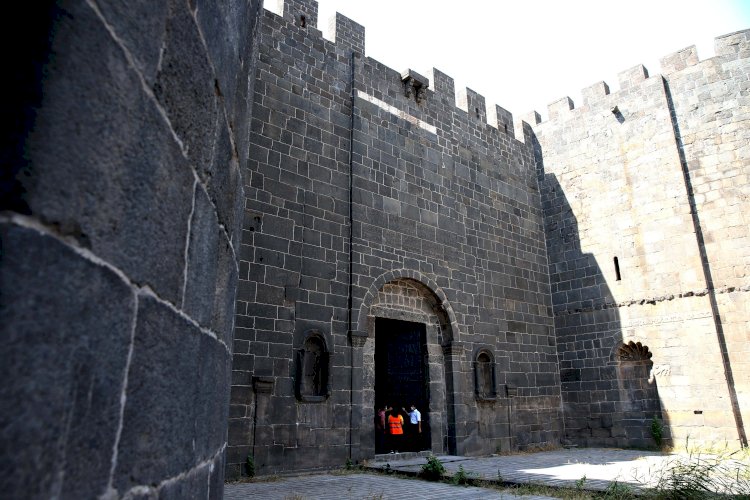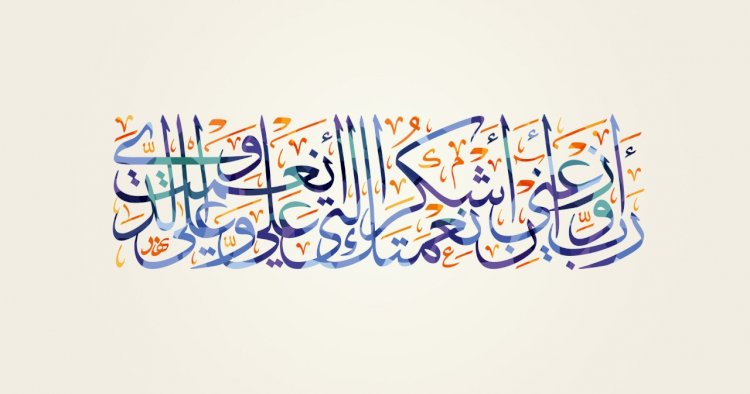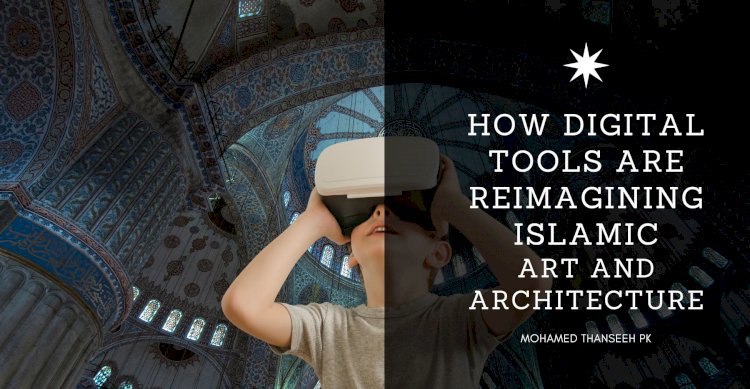How Digital Tools are Reimagining Islamic Art and Architecture
For centuries, Islamic art and architecture have fascinated the world. From the elaborate geometric patterns on the walls of the Alhambra to the soaring minarets of Mecca's Great Mosque, these works have stood as testaments to human ingenuity, artistic expression, and deep faith. Today, the digital age is ushering in a stunning revival of Islamic art and architecture. This digital renaissance is more than just a means of preservation; it's a thriving hub for exploration, education, artistic innovation, and a deeper understanding of this rich cultural heritage.
Digital technology is transforming the field of archaeology, particularly in how it documents and preserves Islamic architectural marvels. Hand-drawn sketches and manual measurements are no longer sufficient. Today, high-powered laser scanners capture the intricate details of mosques, castles, and other structures, resulting in highly realistic 3D digital models.

One pioneering project in this domain is Turkey's Diyarbakir initiative. This program utilizes 3D laser scanning to produce detailed digital reproductions of the city's ancient defenses and mosques. These models not only provide scholars with essential tools for assessing architectural features and identifying potential restoration areas, but they may also reveal previously unknown structures hidden beneath layers of time and debris. Imagine archaeologists virtually peeling back millennia of sand to uncover a hidden courtyard or a long-lost prayer hall!
Another notable example is the CyArk initiative, run by the American School of Oriental Research. CyArk has systematically documented various Islamic cultural sites across the Middle East, North Africa, and Central Asia using 3D laser scanning, high-resolution photography, and drone technology. These digital archives not only ensure the preservation of these architectural marvels but also serve as invaluable tools for academics, educators, and the general public, offering access to these sites for those who may not be able to visit them in person.
The Revolution of Digital Calligraphy: From Parchment to Pixels

Islamic calligraphy, once meticulously crafted with specialized tools like the qalam (reed pens) and ink, is undergoing an exciting digital revolution. Today, calligraphers are embracing computers and tablets to create intricate Arabic scripts, thanks to software like Shafaq and Khattat. These digital platforms offer a wide array of fonts, styles, and decorative elements, allowing calligraphers to explore new artistic directions and push the boundaries of their craft.
Imagine a calligrapher crafting Arabic lettering that flows and transforms on screen, with intricate flourishes enhanced by vibrant digital colors. This evolution not only opens doors to contemporary artistic expression but also enables the creation of captivating animations and interactive displays that introduce Islamic calligraphy to a wider audience. Moreover, digital tools streamline the process of reproducing and replicating historical calligraphic works, ensuring the preservation of this invaluable artistic heritage.
VR Mosques: Entering a Religious Universe

Virtual reality (VR) technology is revolutionizing the way people experience Islamic architecture, offering immersive encounters that transport viewers to the heart of sacred sites. Imagine standing in the vast, echoing courtyard of the Great Mosque of Mecca, surrounded by thousands of Hajj pilgrims, or exploring the intricate geometric designs and stunning mosaics that adorn the walls of the Sheikh Zayed Grand Mosque in Abu Dhabi. With a VR headset, these once-in-a-lifetime experiences are now accessible to anyone, fostering a deeper connection to Islamic faith and architecture for both Muslims and non-Muslims alike.
One groundbreaking example is the virtual reality experience offered by the King Abdulaziz Center for World Culture (iThra) in Saudi Arabia, which allows users to virtually explore the Great Mosque of Mecca, the holiest site in Islam. Similarly, the Museum with No Frontiers has developed a VR experience of the Dome of the Rock in Jerusalem, enabling visitors to examine its breathtaking mosaics and remarkable architecture in stunning detail. These immersive experiences serve as powerful educational tools while also promoting interfaith understanding and dialogue.
Moving Past Preservation to Imagine the Future
The digital space is not just a museum for the past but a launchpad for the future of Islamic art and architecture. With digital tools like Building Information Modeling (BIM), architects are now able to creatively and sustainably design buildings that incorporate traditional Islamic elements. Imagine soaring skyscrapers adorned with intricate geometric patterns that shimmer in the light, reminiscent of the elegant mashrabiya screens or lattice windows seen in historic structures.
A prime example of this innovative approach is the Sharjah Mosque in the United Arab Emirates. While its façade features striking geometric designs inspired by traditional Islamic patterns, the overall structure exudes a sleek, modern aesthetic. Similarly, the Heydar Aliyev Center in Azerbaijan pushes the boundaries of contemporary architecture with its complex, flowing design that pays homage to Islamic architectural traditions. Digital tools allow these intricate geometric motifs to be accurately translated into construction blueprints, ensuring that the legacy of Islamic art continues to inspire and shape modern architecture worldwide.
The Democratisation of Islamic Art through Social Media
Social media platforms like Facebook and Instagram are playing a crucial role in making Islamic art and architecture more accessible to a global audience. Hashtag communities such as #IslamicArt and #MosquesoftheWorld connect artists, enthusiasts, and casual viewers, allowing them to share and celebrate this rich artistic heritage. Imagine scrolling through Instagram and discovering breathtaking images of mosaic-covered mosques in Istanbul or palaces in Marrakech adorned with stunning geometric designs. These platforms not only foster a sense of global connection but also serve as educational tools, bringing attention to lesser-known Islamic artistic traditions and expanding the appreciation of this cultural legacy.
Gamification and Educational Apps
Gamification and mobile apps are making the exploration of Islamic art and architecture more interactive and engaging, especially for younger audiences. Imagine a smartphone app that allows you to take a virtual tour of the Alhambra, complete with educational hotspots that explain the history and significance of its intricate decorations. Educational games within the app could challenge users to identify different architectural styles, understand calligraphy, or even design their own virtual mosques by incorporating traditional elements. For a tech-savvy youth, these interactive experiences spark curiosity, encourage deeper learning, and enhance accessibility and engagement with Islamic art and architecture.
Things to Think About
While the digital revolution offers immense possibilities for Islamic art and architecture, there are challenges that need to be considered. Ensuring equitable access to technology is crucial to allow everyone to experience the wonders of this cultural heritage and to bridge the digital divide. Imagine if only those who can afford expensive VR headsets are able to partake in virtual reality experiences of the Hajj journey. Expanding access to such technologies, especially in developing countries with rich Islamic artistic traditions, is essential.
Additionally, it's important to balance innovation with the preservation of the core principles of Islamic art. In some Islamic traditions, there are restrictions on the depiction of the human form or religious figures in art. Digital tools must be used thoughtfully to ensure that new artistic expressions remain respectful of these established norms.
A Richly Innovative and Tradition-Steeped Future
The digital age is undoubtedly ushering in a renaissance for Islamic art and architecture. The possibilities are endless, from meticulously preserving the past to empowering artists, fostering global understanding, and inspiring future design. As technology continues to evolve, we can expect even more groundbreaking advancements. Imagine, for example, the potential of augmented reality (AR) to superimpose historical details onto actual buildings, allowing visitors to mosques to see the construction process or the structures in their original glory.
The future of Islamic art and architecture lies at the intersection of tradition and innovation. Today's digital tools offer a unique opportunity to document, preserve, and celebrate this extraordinary artistic heritage, ensuring that it continues to captivate and inspire generations to come.
About the author
MOHAMED THANSEEH PK
A student at Sabeelul Hidaya islamic college Parappur currently studying at senior secondary final year
Disclaimer
The views expressed in this article are the author’s own and do not necessarily mirror Islamonweb’s editorial stance.
























Leave A Comment